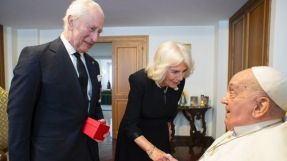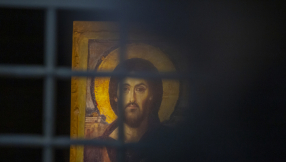Even in an increasingly post-Christian culture, most in the West could probably still tell you what Easter Sunday is about. That's the day Jesus came back from the dead. Even the chocolate eggs evoke something of that 'new life' celebration. But for many the resurrection of Christ remains pure fantasy, a worthy myth, but a myth nonetheless. Eager believers made it up.
Even some Christians may have their doubts about the historicity of the story. In a highly rationalist, post-enlightenment culture, professing faith in a resurrected rabbi might just sound silly.
Yet, Christian apologists frequently centre on Jesus' 'empty tomb' not only as an essential theological tenet, but as one of the most secure platforms from which to make the case for faith. Hence the success of evangelistic books like the bestselling Who Moved The Stone? On a grander scale, academic tomes like New Testament scholar NT Wright's The Resurrection of the Son of God have examined the miracle and its 1st-century meaning.
So what is the evidence for the resurrection? It's a vast conversation to sum up, but there are at least three key points to engage.

1. The honest evangelists
The first assumption made about the resurrection is that it was just a fanciful legend added to the Jesus story long after his life and long after it could be clearly contradicted. And since miracles don't happen, what we can interpret from the stories of Jesus' return is rather a spiritual meaning: though Jesus died a terrible death, he 'lives on' in human hearts. Yet, the resurrection in the New Testament is not a ethereal, non-bodily event but a jarringly tangible experience: the Christ of Easter morning is seen and touched by many. Moreover, it is the central drama of Christ's story, told in all four gospels and preached passionately by Paul.
The significance of Paul's writing is key: though the written gospels emerged decades after Christ, Paul writes no more than 20 years after. In 1 Corinthians 15:3-6 he notes the resurrection not only as a central dogma of the early Christian creed, but speaks of Christ who 'appeared to more than five hundred of the brothers at the same time, most of whom are still living, though some have died'.
This mention in his letter stands as an implicit corroboration and invitation. Jesus was seen by many, Paul says, and you could even go and meet these people. If you wanted to invent or control the story you could simply say that Christ appeared to only a few, and they're dead now so don't worry about the evidence. Similarly, the Gospel writers evidence their authenticity with details that might make their story look less convincing, but which they included anyway. Every Gospel writer states that the resurrection was first discovered by women. But at the time, social prejudice was such that a female witness was not legitimate evidence in court. Hanging your central dogma on the testimony of women was at the time daring to say the least. Unless of course it was true, and enough people knew it to be that you couldn't say otherwise.
2. The empty tomb
The witness of early Christian writings wold of course mean nothing without another key historical detail: the empty tomb. The Romans had just put to death a subversive, high-profile criminal: if his energetic, insurrectionist followers were suddenly declaring a return form the dead, it would be pertinent for the authorities to quash such claims, and simply produce the dead body they had entombed. But it never happened. Indeed, it would have been absurd for Christians to preach a bodily resurrection if their claim could be so easily contradicted. The tomb stands empty, so where did the body go?
Some have suggested that the disciples stole the body: not only would they have had to take on the Roman guard at the tomb, but they would need to forever preserve the dark truth that the defeated saviour they were suddenly declaring 'alive' had really just been shuffled elsewhere, while later dying for their faith. Wright's historical analysis is also clear that bodily resurrection, even of great religious leaders, was simply not an expectation of 1st-century Jews. It wouldn't be something you make up, let alone convince thousands of.
3. The explosive church
The despondent disciples on Holy Saturday are the picture of followers who have just watched their supposed-Messiah executed by the authorities they thought he would overthrow. Such a public humiliation and disappointment would prompt fear, not fervent faith. Yet history documents that this obscure Jewish sect did not die with that generation but exploded in an unprecedented way, becoming the faith still claimed by billions today.
And it was a faith that made strange claims contrary to the Jewish culture of the day: a bodily resurrection that promised future restoration, a man worshipped as the one God who made the world. As Tim Keller writes: 'After the death of Jesus the entire Christian community suddenly adopted a set of beliefs that were brand-new and until that point had been unthinkable.' Why would this movement flourish at all, let alone expand so rapidly, if built on a shaky and ludicrous hoax and backed just by a handful of fishermen? On the contrary, if a shocking yet undeniable, tangible and transformative resurrection really had taken place, and had been witnessed by hundreds, the inspired early church starts to make more sense.
No one can really be argued into faith, nor should we try to do so, and it's worth remembering that even a historically compelling case for Christ's resurrection might leave many unconvinced. The miracle may just remain too strange, too outrageous. But the historical case is good, important to state because it gets beyond the notion of resurrection as simply a 'happy ending' invented by the church. It helps get beyond assumptions and engage with what really might have happened.
But ultimately, what's at stake in this debate is not a detail of history, but the nature of reality: whether death has the final word on existence, or if hope endures and transcends even that one certainty of life.
It was a radical thought then; it's no less radical now.
You can follow @JosephHartropp on Twitter













